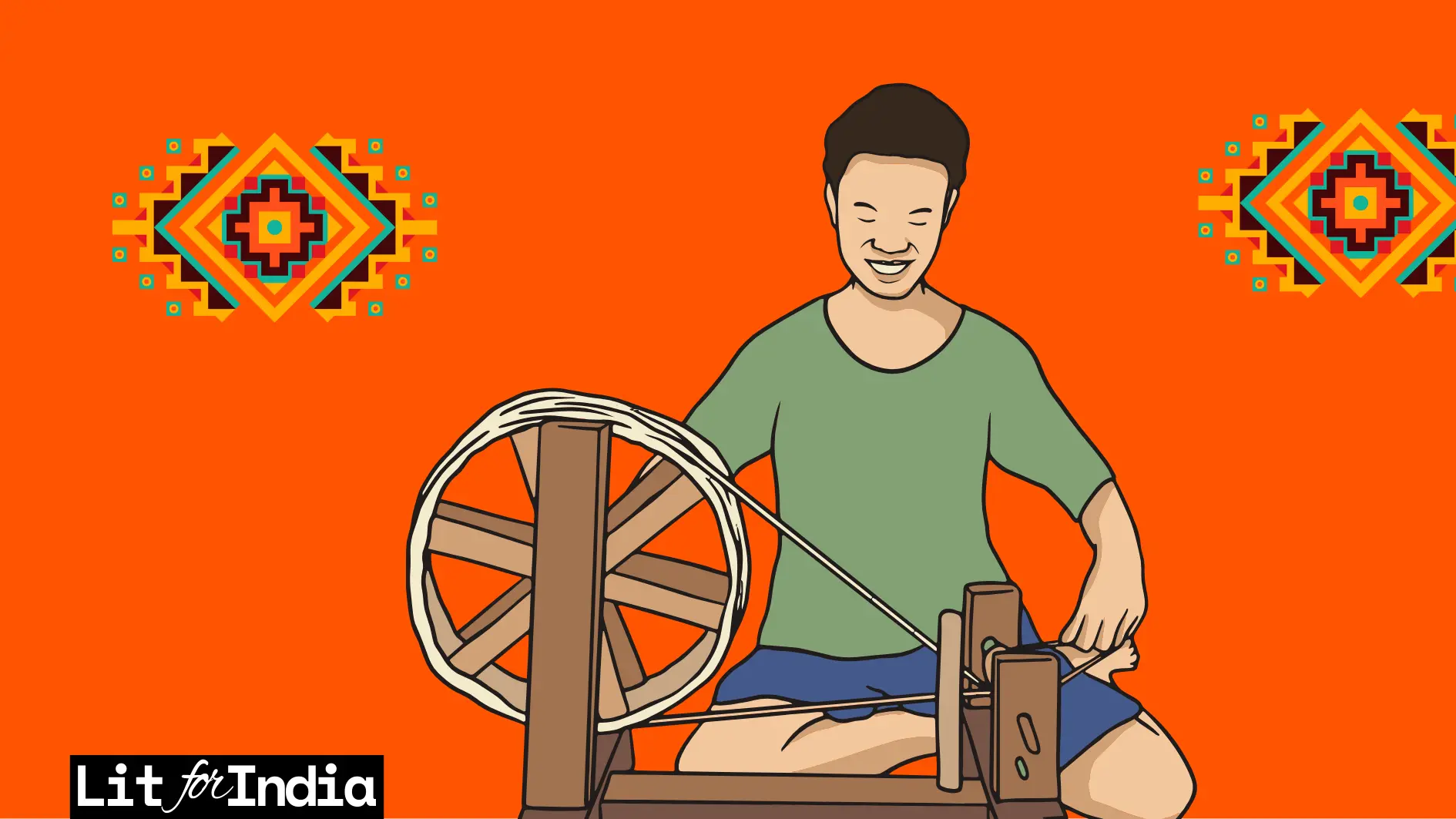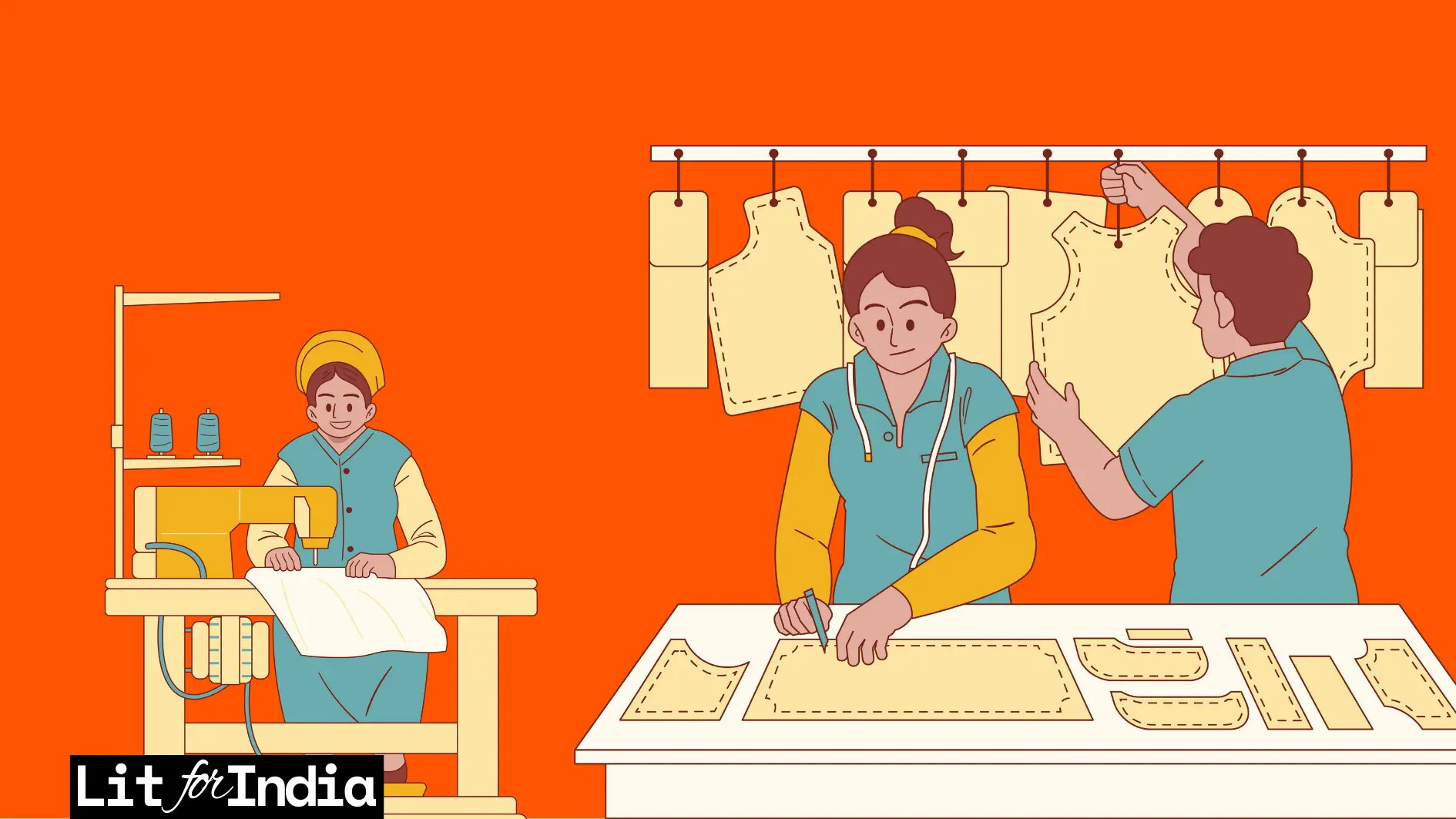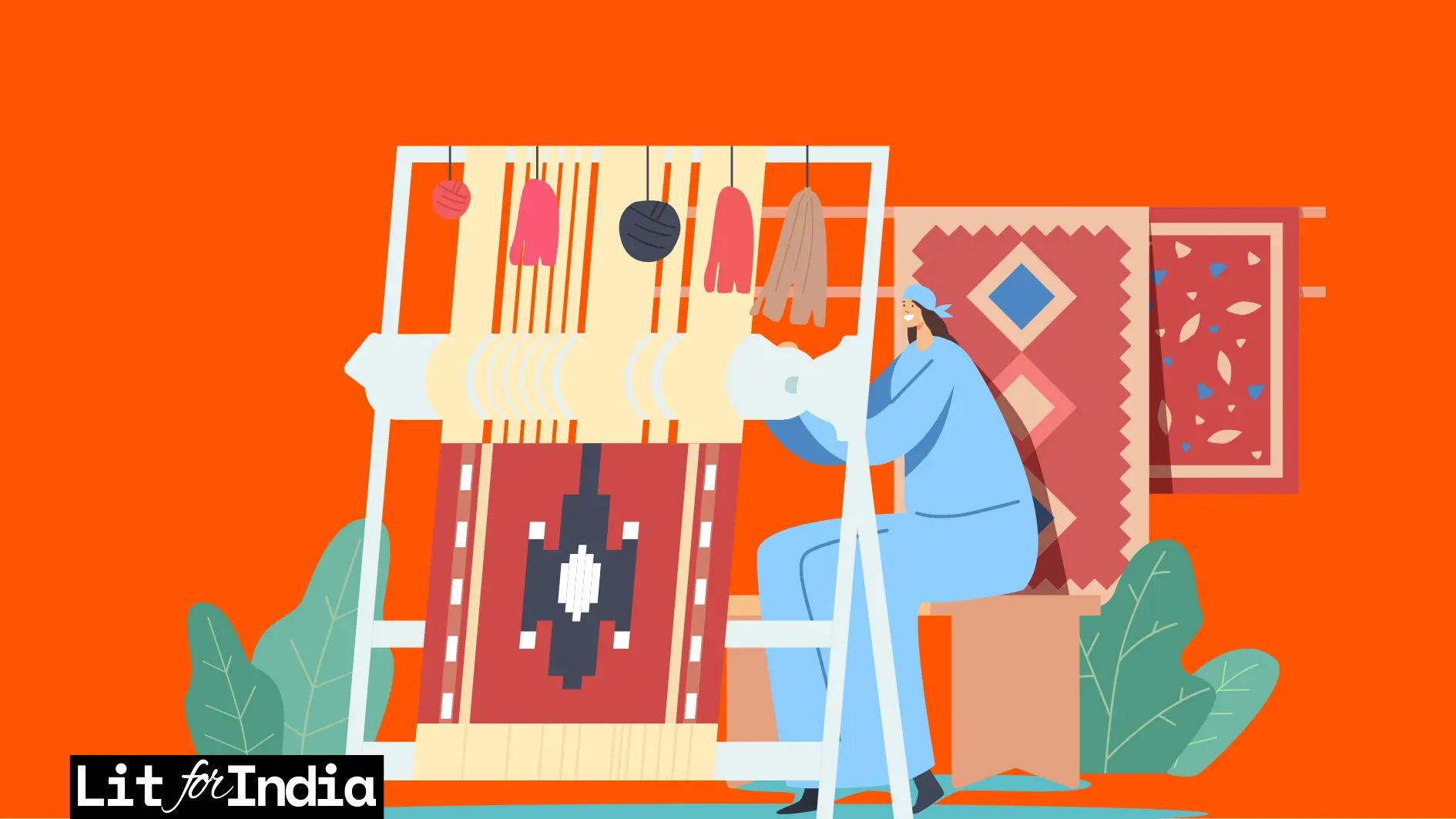“Indian Weavers” by Sarojini Naidu is a beautiful and evocative poem that captures the essence of Indian craftsmanship through the metaphor of weaving. Sarojini Naidu, often known as the “Nightingale of India,” uses her poetic prowess to delve into the lives of Indian weavers, highlighting their skill, dedication, and the rich cultural heritage they embody. The poem intricately weaves together the stages of life with the different garments woven by these artisans, painting a vivid picture of their world. This blog will provide a detailed summary and analysis of “Indian Weavers” by Sarojini Naidu, exploring its themes, imagery, and the poet’s unique stylistic choices.

Indian Weavers by Sarojini Naidu
Stanza 1
Weavers, weaving at break of day,
Why do you weave a garment so gay?
Blue as the wing of a halcyon wild,
We weave the robes of a new-born child.
Stanza 2
Weavers, weaving at fall of night,
Why do you weave a garment so bright?
Like the plumes of a peacock, purple and green,
We weave the marriage-veils of a queen.
Stanza 3
Weavers, weaving solemn and still,
What do you weave in the moonlight chill?
White as a feather and white as a cloud,
We weave a dead man’s funeral shroud.
Summary Of The Poem “Indian Weavers” By Sarojini Naidu
Stanza 1
The first stanza introduces the weavers working at daybreak. The speaker asks them why they weave a garment as blue as the summer sky. The poet compares the desired colour of the garment to blue, like the kingfisher. It also shows how one resonates the girl blue with a baby boy that is being born. “We weave the robes of the newborn child.” This line also suggests a symbolic connection between the weavers and the beginning of life. They are creating something new and pure, just like the birth of a child.

Stanza 2
The second stanza of “Indian Weavers” by Sarojini Naidu shows the stage of youth and marriage. The stanza mentions “fall of night,” suggesting a more mature time compared to the first stanza’s “break of day.” The “marriage veil of a queen” symbolises the impact of a marriage veil on a woman. It means a grand union representing the bride’s transformation into a significant figure within her new family.
Stanza 3
In the last stanza, the shift focuses on celebrating emotions to a grave and serene, accepting tone of death. The “chill of the pale moonlight” sets the scene as nighttime, a time often associated with sleep and the unknown. It creates a sense of peacefulness but also coldness, hinting at the finality of death. The weavers’ reply is short and direct: “We weave a shroud for a dead man.” This simple statement underlines the purpose of the cloth to cover the body of someone who has passed away. This stanza completes the cycle of life depicted in the poem. The weavers, through their craft, are linked to all stages of human existence, from the beginnings of life to its inevitable end.
Analysis of Indian Weavers
The poem has three stanzas, each describing the weavers creating a garment at a different time of day. “Indian Weavers” by Sarojini Naidu isn’t literally about weavers creating clothes. She uses the weavers and their work as a metaphor to represent the different stages of human life. She uses a simple rhyme scheme throughout the poem. Each of the three stanzas follows an AABB pattern. This means the first and second lines rhyme, and the third and fourth lines rhyme. The themes that are mentioned in the poem include the weavers’ roles beginning and mortality of life, and it can also be an interpretation of a woman’s life in India, which is just about marriage and death.

Stanza 1
The first stanza of the poem “Indian Weavers” by Sarojini Naidu focuses on the theme of new beginnings and the joy of birth. The line “break of day” can be interpreted as a metaphor for the beginning of life for the newborn child. In the poem, the phrase “wing of a halcyon wild” is a simile. It compares the desired colour of the garment being woven to the wing of a kingfisher bird (halcyon) known for its vibrant blue feathers. It also shows the weavers life which is dependent on such celebrations of the newborn child. The overall tone of the stanza is celebratory and optimistic.
Stanza 2
The second highlights the stage of youth and marriage. It emphasises the joyous occasion of marriage and the formation of a new family unit. It can also be seen from a female perspective as she is married; her marriage veil is an indication of her freedom trapped into the veil that is woven. On the other hand, the imagery and colours also hint at royalty or nobility, considering the mention of a “queen’s marriage-veils.
Stanza 3
The ending stanza of the poem indulges in the mortality of life, The most prominent theme in this stanza is death. The act of weaving a shroud for a dead man directly confronts the reader with human mortality. While the poem focuses on the weavers’ work, the shroud signifies that death touches everyone, regardless of background or social status.
Poetic Devices In The Poem Indian Weavers
Repetition: The most prominent use of repetition is the constant use of the verb “weave.” This emphasises the weavers’ ongoing and essential role in creating fabrics for different stages of life.
Simile: The poem uses a beautiful simile in the first stanza: “Blue as the wing of a halcyon wild.” This comparison brings the desired colour of the fabric to life by referencing the blue feathers of a kingfisher bird.

Imagery: Naidu paints a clear picture with her word choices. Colours like “blue,” “purple,” and “green” create strong visual imagery, allowing the reader to imagine the richness of the fabrics. Additionally, references to “break of day” and “chill of the pale moonlight” set the scene for different times of day, further connecting the fabrics to specific life stages.
Alliteration: The poem subtly employs alliteration, particularly with the “w” sound in “Weavers, weaving at shut of night.” This repetition creates a sense of rhythm and creates an image of the weavers working diligently.
Rhetorical Question: Stanza 2 of the poem “Indian Weavers by Sarojini Naidu” asks the rhetorical question, “Why do you weave a garment so bright?” This question doesn’t necessarily need an answer. It serves to draw attention to the garment’s celebratory nature and the joyous occasion it’s intended for.
Personification: While not as prominent, the first stanza has a subtle hint of personification. The “break of day” might be metaphorically described as a child’s beginning of life.
Conclusion
The poem Indian Weavers by Sarojini Naidu concludes by highlighting the interconnectedness of life and death through the weavers’ skill of weaving. It shows the circle of life from the newborn, marriage, and death also linking it to the story of a married Indian woman. The poet wants the reader to dig deep into the figurative meaning of the poem, which one cannot figure out by surface reading. Overall, the poem leaves a lasting impression of the cyclical nature of life and the universality of human experiences like birth, love, and death.

